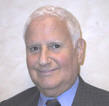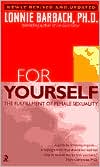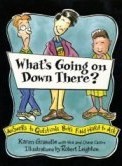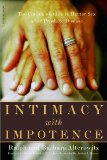What It Takes For You To Stop Self-Injuring

Dr. Sarah Reynolds, our guest speaker, is an expert on Dialectical Behavior Therapy (DBT), a type of psychotherapy used for reducing self-injury and suicidal behaviors.
David Roberts is the HealthyPlace.com moderator.
The people in blue are audience members.
David: Good Evening. I'm David Roberts. I'm the moderator for tonight's conference. I want to welcome everyone to HealthyPlace.com.
Our topic tonight is "Self-Injury: What it takes for you to stop self-injuring and DBT for treating self-injury." Our guest is Sarah Reynolds, Ph.D., who is a research coordinator at the Behavioral Research and Therapy Clinic (BRTC). The BRTC, directed by Dr. Marsha Linehan, is devoted to the study and treatment of self-injury and suicide. Dr. Reynolds has extensive training and experience with Dialectical Behavior Therapy (DBT), a well-known and scientifically based outpatient psychotherapy for reducing suicidal behaviors.
Good evening, Dr. Reynolds and welcome to HealthyPlace.com. We appreciate you being our guest tonight. Many people talk about wanting to quit self-injuring, yet they find it extremely difficult to accomplish that. Why is that?
Dr. Reynolds: People self-injure, usually to regulate extreme negative emotions. It is often their only way to cope. It is the only way that they have learned, and so they keep coming back to it. It is obviously ineffective for having a reasonable quality of life, but it can work in the short-term for reducing the emotional pain.
David: What skills, exactly, do they lack?
Dr. Reynolds: Well, first of all, they usually are quite emotionally vulnerable, that is, they have a lot of ups and downs in their moods. Thus, they have a lot of emotionalities to try to deal with, just because of their biology. Further, people who self injure, typically have a lot of difficulties tolerating their negative emotions without doing something impulsive to try to stop them, and they may have difficulty forming good relationships with others.
David: Is it possible for someone to learn to stop self-injuring on their own, without professional treatment?
Dr. Reynolds: It may be possible, depending on the severity of their self-harm, but it might be quite difficult.
David: And I want to get into the treatment aspect in a moment, but you mentioned that some people use self-injury to regulate their emotions. How does that work?
Dr. Reynolds: A lot of emotional regulation skill involves refocusing attention away from emotional pain, a skill that self-injurers often lack. So, self-injury can focus attention away from the original problem and onto the physical injury. It can also validate for the person their own sense (although it is false) that they are a bad person and deserve to be punished. So, in this way, it can be calming because it validates their sense of the world.
Finally, people sometimes self injure because it can take them out of a difficult situation that causes stress. This indirectly reduces negative emotions.
David: What is the most effective method of treatment for self-injury?
Dr. Reynolds: The only treatment that has been shown to be effective in a scientific study is Dialectical Behavior Therapy (DBT). Several studies have shown that DBT reduces self-injury (both self-mutilation and suicide attempts) for women diagnosed with borderline personality disorder (BPD). There may be other treatments out there that people consider "effective" but none have been researched. Unfortunately, not much research is done on this problem.
David: Can you please explain what Dialectic Behavior Therapy is and how it works?
Dr. Reynolds: DBT is an outpatient (out of hospital) psychotherapy that views self-injury as an ineffective attempt to solve problems. Therefore, the goal of DBT is to stop self-injury and figure out better solutions. It is a structured treatment that is cognitive-behavioral. It has a number of different parts, including individual therapy, and a skills group that teaches skills for tolerating distress, increasing awareness of surroundings (mindfulness), regulating emotions, and interacting effectively with others.
David: We have a lot of audience questions, Dr. Reynolds. Let's get to some of those and then we'll continue on with our discussion about the treatment of self-injury.
Fragil Heart: My neighbor Michele, a single mom of three, is a self-injurious person who cuts herself repeatedly. I know that she refused treatment for her drug addiction and the Department of Human Services is going to remove her children. She has no knowledge of this. My question is, after the kids are gone, her chances of cutting are great and she has begun to hide her cuts. How can I help her, if I can? I do support and listen to her.
Dr. Reynolds: Well, the best thing is to encourage her to get into treatment. I would also consider telling her that you think her kids will be removed from the home. Often times, it can take major consequences as a result of our behavior before we can change. I am sure that even your emotional support is a great comfort to her, as many people who cut are very socially isolated.
2nice: How common is self-injury in people with a depressive illness?
Dr. Reynolds: Self-injury is very often associated with a diagnosis of BPD (Borderline Personality Disorder), and very often with a mood disorder, such as depression. People who self-injure are often chronically miserable.
Keatherwood: I haven't done any self-injury for over five years. Because of some things that happened this past weekend, it is all I can think of. I'm taking extra medications, doing all the alternatives I know, talking with my therapist, etc., but I can't get the idea out of my mind. I feel like I'm going to explode if I don't do something. I thought I was past this. Any suggestions? The hospital has been suggested, but I'd like to avoid that.
Dr. Reynolds: Wow! It is fabulous that you have not self-harmed in so long. You clearly have a lot of good skills, if you have been able to resist previous urges to self-injure, which I bet you have done. How did you get through those rough patches before? Think about that.
Also, I would think about the pros and cons of doing it at this point. What are the bad things about doing it, and is it really likely to make you feel better? Think carefully about it, and my guess is that in your heart of hearts, you know it will ultimately make you feel worse. You've done wonderfully for this long. Stay committed to no more self-injury.
David: Is it unusual, or not unusual, for someone to suffer a relapse once they have "recovered"?
Dr. Reynolds: It is not at all unusual. Self-harm has an addiction-like quality. But the longer someone avoids it, the longer they will likely keep from doing so again. The trouble is that each time one self-injures, it teaches your brain that self-injury is the way to solve problems, and thus, blocks you from finding more effective solutions to what is really happening in your life.
secret*shame: I am sixteen, and I have been cutting for five years. Why can't I stop? I don't want to tell my mom because I don't want to hurt her. What can I do?
Dr. Reynolds: I am so sad to hear that you have been cutting since age eleven. From your name, it sounds like you have a lot of shame about who you are and your self-injury? The thing is, you probably should tell your mother or someone you can trust if not her. The point is, you have been doing this for a long time, and it is too big of a problem for you to get over it by yourself! I desperately hope that you talk to an adult who can help you out with this. That is the only way you can stop it right now. I want to emphasize, secret*shame, that your mother will be far more hurt if you do not tell her about this so that she can help you.
David: I want to add, secret*shame's situation is not unusual. Many teens are afraid to tell their parents about things like self-injury. How would you suggest they handle that, Dr. Reynolds? Because without their parent's help (insurance and support), they can't get the therapy they need. How, specifically, can they broach the subject with their parents?
Dr. Reynolds: Yes, that is true. If they don't want to acknowledge the self-injury itself, they could consider getting help simply due to depression and misery. Once in therapy, their responses will likely be confidential, or at least they can ask the therapist if it can be kept confidential. Certainly, for someone who is sixteen, the therapist is unlikely to talk to their parents without consent unless the adolescent is at risk of suicide. If not their parent, I would strongly urge them to try to find another adult that they can trust such as a teacher, an older sibling, etc.
David: That's a good suggestion.
here2help: I am a seventeen-year-old male student in England, UK and I have a seventeen-year-old female friend who does self-injury. She has been doing this for about two years, I think, but it has only recently become known to anyone but herself. I was the first person she told out of choice, but others found out either after she fainted or by finding blood on her. I want to know what I can do to help her. She is on anti-depressants, although she's not very good at taking them. She does have therapy and she also drinks.
Dr. Reynolds: She is in a relatively good situation given that she has treatment and friends. If you think that her self-injury is a bad thing, it might help to be honest with her about that. Communicate to her that you think it is a big problem. I think that would be helpful.
teatranna: Are the use of "ice cube" therapy (holding ice cubes in the hands to feel pain) or "line" therapy (the drawing of lines on one's body with a red marker) effective alternatives to self-injury, or are they dangerous substitutions that only perpetuate the urges?
Dr. Reynolds: I think this is a much better alternative than actual tissue damage (breaking the skin). It is qualitatively different from inflicting tissue damage and is a great way to work on stopping self-injury.
David: Here are some more questions:
scarlet47: My therapist is sending me for four DBT sessions. Can that amount help with success. I refuse to attend more. It was unnatural and brainwashing to me, and I don't have patience and won't attend any group sessions. I committed to him to attend, but I am not open to it. He wants to see the impact. I believe you can take the horse to the well, but you can't make him drink.
Dr. Reynolds: Four sessions of Dialectical Behavior Therapy will not help. However, a year of DBT can help you to bring about incredible changes in your life. You must have some reasons for going to even four sessions? Think about the advantages and disadvantages of going. But you are right, you must be absolutely committed to ending self-injury. Otherwise, the treatment won't work. I hope you change your mind. Good luck.
ill_fated: What is the difference between DBT and CBT (Cognitive-Behavioral Therapy)?
Dr. Reynolds: DBT is specifically designed to treat people who have problems with self-injury, and who have severe personality disorders, like Borderline Personality Disorder. It is actually a form of cognitive-behavioral therapy, but the other types of CBT that are currently available are only for anxiety, depression, and eating disorders. Also, one piece of DBT that is relatively unique, is that it emphasizes validating the patient. This is important because self-injurers often do not trust themselves, their emotional reactions, or their experiences as valid and meaningful. DBT helps the client to learn to trust and validate themselves.
Crazy02: Dr. Reynolds, I am in the Philadelphia area and the mother of a nineteen-year-old self-injurer. I hear what you are saying, but what can I do to help my daughter?
Dr. Reynolds: Have you tried to get her into therapy?
David: That would be the first thing. What else can a parent do to help? And also, a lot of parents feel guilty, thinking they are the cause of their child's self-injury behavior.
Dr. Reynolds: Well, I realize that you may not be able to interact with me and answer my question. Basically, I think that is the central piece. If she refuses to go, then, providing the emotional support that you do is no doubt helpful. Beyond that, it is essentially impossible to control a nineteen-year-old's behavior. I know this must be very frustrating, but your hands are somewhat tied.
For parents in general, there are some good self-help books that they might consider reading, such as "Eclipses" by Melissa Ford Thornton. Another book I want to mention that can be helpful for friends and family of self-injurers is "Stop Walking On Eggshells."
I also emphasize that it is not reasonable for any parent to think that it is their "fault" that their children are engaging in self-injury. Things are not that simple.
hippiemommy3: Other than cutting and forms of self-mutilation, is taking overdoses a form of self-injury? At least once a week I seem to take 20 Darvocet and I want to stop. I am in a day treatment program and have a good therapist. I have medication management, but whenever I get my hands on my pills, I just take too many. Is this self-injury, or something else?
Dr. Reynolds: Taking overdoses can be a form of self-injury. In your case, I would want to know your intent. It sounds like your problem is more likely drug addiction.
David: Someone asked a question about the books Dr. Reynolds mentioned. You can find some in our online bookstore.
xXpapercut_pixieXx: Can DBT also be used to bring a person back from a sense of numbness or blankness?
Dr. Reynolds: This sense of numbness is not uncommon in people who have BPD and who self-injure. The answer is yes, DBT can be very helpful for addressing this problem as it so often coexists with BPD and self-injury.
arryanna: Is there any specific medication you have found to help reduce the amount of self-injury?
Dr. Reynolds: No, the few studies that have been done, indicate that no medications are effective in the long-term.
Filly: What if part of the problem is not learning the proper skills. I made it fine through the teens, twenties and most of the thirties with only a few thoughts of self-injury and now, suddenly, after the break up of a long relationship, added with high stress from work, I started to self-injure? By the way, I am in the DBT of Portland, and I do believe it will work.
Dr. Reynolds: It is not uncommon that people may "fall apart" and self-injure in instances of extreme stress. It sounds like that's what happened to you. But, you have an excellent prognosis for getting past this, since it started late and you are already in a good treatment program. Good luck.
megs5: I have heard that self-injury is most common among people who have been abused or raped. Why would someone like me cut? I have not been through anything?
Dr. Reynolds: Many people who self-injure or attempt suicide have a history of abuse. However, many do not. The etiology of this behavior is not exactly known. What I believe, is that a person is born biologically with a predisposition to be very emotional. Then, they have an environment that does not meet their needs.
angelight789: Is self-injury related to one's menstrual cycle or hormone level? I am taking a drug called Lupron that induces menopause and I have been cutting more. I have severe endometriosis and a lot of female-related problems. Could this impact my self-injury problem?
Dr. Reynolds: I am not sure whether it could directly affect your cutting. A medical doctor would be better able to answer that. What I can say, is that having health problems increases stress, which certainly increases the likelihood of self-injury.
dazd_and_confusd: I was hospitalized for an attempted suicide last year for 8 and 1/2 months. I'm still suicidal and I self-injure. I'm in therapy, but nothing helps. I'm afraid of going back to the hospital because I don't think it will help, but that seems like the only option. I'm afraid. I hate the way I am and how my life is, and I don't know what else to do.
Dr. Reynolds: You sound really desperate. The thing to do at a time like this is to try to generate some hope that things will get better and that this will pass.
As for the hospital, I am not an advocate of hospitalization for suicide attempts, because there is absolutely no evidence that it helps. In fact, I think in some cases it can harm because it does not teach you to cope in your everyday environment. So, I agree that the hospital is probably not the answer. Please remember when you are acutely miserable, things will get better. No emotion lasts for a long time. It always peaks and then dissipates like a wave. Hang in there.
bleedingpink: I started cutting last year. It got really bad to the point where I was cutting thirty times a night. I was able to stop for seven months. Then, one day I found out my best friend was cutting again, and it made me start cutting again. Why is that?
Dr. Reynolds: It is very common that talking to another who cuts, or talking about cutting, is a trigger for people to cut. I would urge you to not talk to her about this, and be sure that you have friends who cope in more adaptive ways.
betty654: I have been in DBT for almost a year now and have not cut. The thoughts are worse than ever and I feel worse than before. Will the thoughts ever go away and for how long?
Dr. Reynolds: It is wonderful that you have not cut! You're obviously working hard toward building a life worth living. It is no surprise that the thoughts are still there. I assume that you mean thoughts or urges to cut and misery? The bad news is, that the misery and urges take longer to go away than just the cutting itself. The good news is that you will get there, it just takes a lot of work and some radical acceptance that you may not be the kind of person that will ever be light-hearted and happy-go-lucky. Good luck betty654.
David: Dr. Reynolds, referring back to your earlier comment regarding hospitalization, you mentioned that you didn't think it was particularly helpful for those who are suicidal. One of our audience members thought that hospitalization would stop the person from following through, at least for a while. Can you respond to that?
Dr. Reynolds: Yes, people assume that the best treatment is to be very restrictive to those who are suicidal, but no one has ever done a study on that. This is a good point, because it may stop them for twenty-four hours, and I would never say that hospitalization is always bad, but what is to be done after that short period of time is up? Also, any short-term gain is offset by the long-term disadvantage of what they have learned: that when they fall apart and can't cope on their own, they are taken to the hospital and taught that they cannot care for themselves.
Also, they cannot live in the hospital forever, and they need to learn how to control their emotions in everyday life. Studies have shown that learning needs to take place in the environment in which it will be used, which means a person's daily life.
dianna_mcheck: Can practicing sado-masochism relate to self-injury? When I am in a sexual relationship where S&M is present, I don't self-injure, but when it is not, I do. Is it just a fluke, or is it connected?
Dr. Reynolds: It could be connected, particularly if you are masochistic. But self-injury is typically not done to cause sexual arousal.
Jayfer: At the moment, I am trying really hard. I am seeing a therapist but finding it really hard to stop at the moment. I quite often rely on the thought of, "Well if I can't cope, I can always self-injure." Would you say that this thought is natural and healthy? If not what can I do to change this thought?
Dr. Reynolds: That thought is understandable given that you have been doing this for a long time, but it is definitely not healthy or natural. That thought is really your mortal enemy because it is "keeping the door open" to self-harm, and therefore, not really teaching you new ways to cope. What you should do is commit that there will absolutely be no more self-harm. SLAM the door, as if you were a drug addict.
tracyancrew: Do you think a day treatment program like partial hospitalization helps someone who self injures?
Dr. Reynolds: An intensive treatment like partial hospitalization can be great. It is not the same as an inpatient hospitalization because you do go home at night, and also typically have assignments at home, etc. So, beyond that, I would have to know what type of treatment it is.
There are a number of DBT partial hospitalization programs, for example, the one I know of for certain is Cornell Medical Center in New York. For those interested in finding DBT providers in their area, you can check at this website: www.behavioraltech.com. This is the website of the Behavioral Technology Transfer Group. It is a company that specializes in empirically supported treatments such as DBT. So, they have a resource list on their website.
earthangelgrl: OK, when does self-injury come to the point where it is dangerous and you should seek help for cutting? I have had days where I have done nearly 500 cuts.
Dr. Reynolds: Clearly, you have reached the point of "dangerous" in the sense that the quality of your life is probably nil. It does not matter that your cutting is not medically serious, I strongly advise you to get professional treatment as soon as possible! I wish you well.
smilewmn: I see a therapist for abuse related issues. She knows I cut, but doesn't tell me it's wrong., so I feel like it's okay to do. Why wouldn't she tell me it's wrong?
Dr. Reynolds: There are a number of treatment providers who may say that it is "okay" to cut while you work on the underlying problems related to the cutting. My treatment approach, DBT, takes a very different approach that you cannot have a good life when you are intentionally harming yourself. Each time that happens you teach yourself that it is the only solution, and perhaps also that you are a bad person deserving of pain. It just depends on your treatment goals: if you want a better life, you have to commit to stopping any cutting or suicide attempts.
Tigirl: I have been cutting, burning, and breaking bones for about two years and I have been anorexic for fourteen years. What are my chances of getting better? (Find information about anorexia)
Dr. Reynolds: You have good chances of leading a good life, if you get help. You seem to be looking for help, and if so, that is definitely on your side because people who don't ask for help have a lot less chance of getting better. Good luck, Tigirl.
Nerak: I have not self-injured in thirty-two days, but I feel the urges coming back, and am so afraid that one day I will not be able to stop. Any suggestions on what to do to not get to that point?
Dr. Reynolds: Try to identify things that you have done before that help. For example, some people know they will not cut when around others. Also, consider the ideas earlier such as holding an ice cube. I would also make out a list of pros and cons for self-harming so that you can look at it when you begin to get dysregulated. Finally, you have to remember that even when you have an urge, it will peak and then go down. So, you just have to get through it.
David: Thank you, Dr. Reynolds, for being our guest tonight and for sharing this information with us. And to those in the audience, thank you for coming and participating. I hope you found it helpful. Also, if you found our site beneficial, I hope you'll pass our URL http://www.healthyplace.com around to your friends, mail list buddies, and others.
Dr. Reynolds: Thank you very much for having me. I have enjoyed it.
David: And again, Dr. Reynolds, thank you for staying so late and answering questions. We appreciate it.
Dr. Reynolds: Good luck to everyone, and take care.
David: Good night, everyone.
Disclaimer: We are not recommending or endorsing any of the suggestions of our guest. In fact, we strongly encourage you to talk over any therapies, remedies or suggestions with your doctor BEFORE you implement them or make any changes in your treatment.
APA Reference
Tracy, N.
(2007, April 11). What It Takes For You To Stop Self-Injuring, HealthyPlace. Retrieved
on 2025, April 6 from https://www.healthyplace.com/abuse/transcripts/stop-self-injuring-dbt
 Ideally, the diagnosis of ADHD should be made by a professional in your area with training in ADHD or in the diagnosis of mental disorders. Child psychiatrists and psychologists, developmental/behavioral pediatricians, or behavioral neurologists are those most often trained in differential diagnosis. Clinical social workers may also have such training.
Ideally, the diagnosis of ADHD should be made by a professional in your area with training in ADHD or in the diagnosis of mental disorders. Child psychiatrists and psychologists, developmental/behavioral pediatricians, or behavioral neurologists are those most often trained in differential diagnosis. Clinical social workers may also have such training.
 Recent data on continuation ECT have primarily consisted of retrospective series in patients with major depression (Decina et al. 1987; Loo et al. 1988; Matzen et al. 1988; Clarke et al. 1989; Ezion et al. 1990; Grunhaus et al. 1990; Kramer 1990; Thienhaus et al. 1990; Thornton et al. 1990; Dubin et al. 1992; Puri et al. 1992; Petrides et al. 1994; Vanelle et al. 1994; Swartz et al. 1995; Beale et al. 1996), mania (Abrams 1990; Kellner et al. 1990; Jaffe et al. 1991; Husain et al. 1993; Vanelle et al. 1994; Godemann & Hellweg 1997), schizophrenia (Sajatovik & Neltzer 1993; Lohr et al. 1994; Hoflich et al. 1995; Ucok & Ucok 1996; Chanpattaria 1998), and Parkinson's Disease (Zervas & Fink 1991; Friedman & Gordon 1992; Jeanneau 1993; Hoflich et al. 1995; Aarsland et al. 1997; Wengel et al. 1998). While some of these investigations have included comparison groups not receiving continuation ECT or have compared use of mental health resources before and after implementation of continuation ECT, controlled studies involving random assignment are not vet available. Still, suggestive evidence that continuation ECT is cost-effective, in spite of the cost per treatment, is particularly promising (Vanelle et al. 1994; Schwartz et al. 1995; Steffens et al. 1995; Bonds et al. 1998). In addition, an NIMH-funded, prospective multi-site study comparing continuation ECT with continuation pharmacotherapy with the combination of nortriptyline and lithium is presently underway (Kellner - personal communication).
Recent data on continuation ECT have primarily consisted of retrospective series in patients with major depression (Decina et al. 1987; Loo et al. 1988; Matzen et al. 1988; Clarke et al. 1989; Ezion et al. 1990; Grunhaus et al. 1990; Kramer 1990; Thienhaus et al. 1990; Thornton et al. 1990; Dubin et al. 1992; Puri et al. 1992; Petrides et al. 1994; Vanelle et al. 1994; Swartz et al. 1995; Beale et al. 1996), mania (Abrams 1990; Kellner et al. 1990; Jaffe et al. 1991; Husain et al. 1993; Vanelle et al. 1994; Godemann & Hellweg 1997), schizophrenia (Sajatovik & Neltzer 1993; Lohr et al. 1994; Hoflich et al. 1995; Ucok & Ucok 1996; Chanpattaria 1998), and Parkinson's Disease (Zervas & Fink 1991; Friedman & Gordon 1992; Jeanneau 1993; Hoflich et al. 1995; Aarsland et al. 1997; Wengel et al. 1998). While some of these investigations have included comparison groups not receiving continuation ECT or have compared use of mental health resources before and after implementation of continuation ECT, controlled studies involving random assignment are not vet available. Still, suggestive evidence that continuation ECT is cost-effective, in spite of the cost per treatment, is particularly promising (Vanelle et al. 1994; Schwartz et al. 1995; Steffens et al. 1995; Bonds et al. 1998). In addition, an NIMH-funded, prospective multi-site study comparing continuation ECT with continuation pharmacotherapy with the combination of nortriptyline and lithium is presently underway (Kellner - personal communication). LONDON - New "landmark" research finds that alcohol and tobacco are more dangerous than some illegal drugs like marijuana or Ecstasy and should be classified as such in legal systems, according to a new British study.
LONDON - New "landmark" research finds that alcohol and tobacco are more dangerous than some illegal drugs like marijuana or Ecstasy and should be classified as such in legal systems, according to a new British study. Everything seemed to be going okay, except that my insurance company was refusing to precertify anymore visits until my psychiatrist filled out and submitted a treatment plan. We had just changed my medication balance, boosting
Everything seemed to be going okay, except that my insurance company was refusing to precertify anymore visits until my psychiatrist filled out and submitted a treatment plan. We had just changed my medication balance, boosting  Sexual dysfunction in women can include persistent or recurrent disorders of sexual interest/desire, disorders of subjective and genital arousal, orgasmic disorder, and pain and difficulty with attempted or completed intercourse. At the meeting, the International Definitions Committee recommended several modifications to the existing definitions of female sexual disorders (Basson et al., 2004b). The changes include a new definition of sexual desire/interest disorder, division of
Sexual dysfunction in women can include persistent or recurrent disorders of sexual interest/desire, disorders of subjective and genital arousal, orgasmic disorder, and pain and difficulty with attempted or completed intercourse. At the meeting, the International Definitions Committee recommended several modifications to the existing definitions of female sexual disorders (Basson et al., 2004b). The changes include a new definition of sexual desire/interest disorder, division of 









